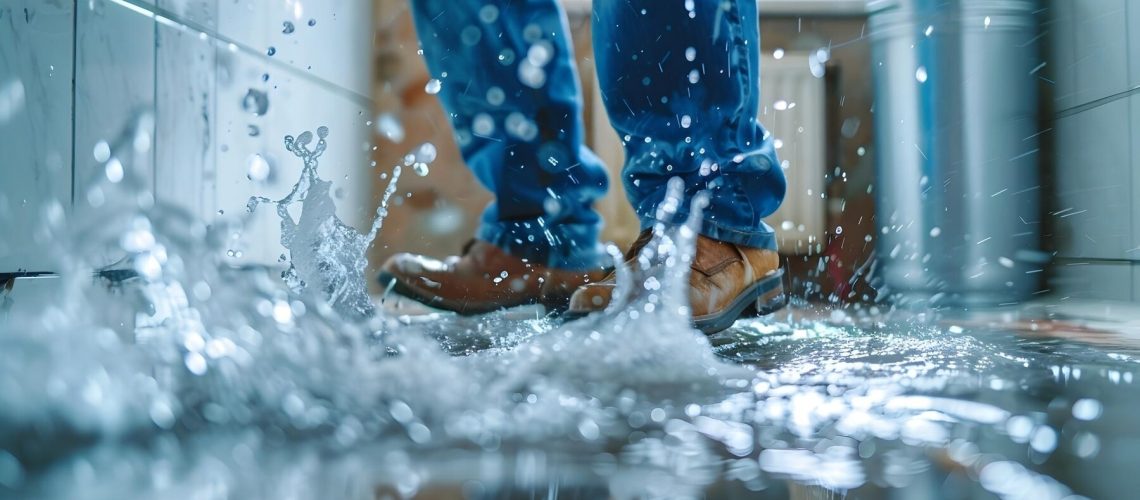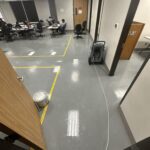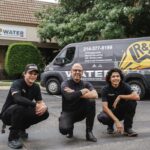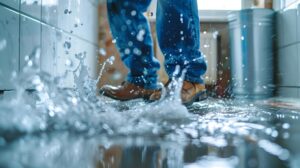When water damage strikes—whether from a burst pipe, storm, or flood—it’s easy to feel overwhelmed. In the middle of the chaos, you might turn to the internet, neighbors, or even social media for advice. Unfortunately, there’s a lot of misinformation out there that can steer people in the wrong direction.
At Water Rehab & Restoration, we’ve heard just about every myth in the book. So we’re setting the record straight. In this guide, we’re breaking down some of the most common myths about water damage restoration and giving you the facts you need to make informed decisions.
Key Takeaways
- Waiting is a mistake: Water damage gets worse the longer it goes untreated.
- Looks can be deceiving: Just because it looks dry doesn’t mean it is dry.
- Fast action prevents mold: Mold can begin growing within 24–48 hours.
- Professional help matters: Certified experts have the tools and knowledge to do the job right.
- Insurance often helps: Many policies cover accidental water damage—don’t assume you’re out of luck.
- Restoration is possible: Your property can be fully restored with the right approach.
Myth #1: Water will dry on its own over time
We hear this one all the time: “It’s just a little water—it’ll dry naturally.” While some surface moisture might evaporate, what’s happening beneath the surface is the real concern. Water can quickly seep into porous materials like drywall, flooring, wood, and insulation, where it can remain trapped.
If left untreated, this hidden moisture creates the perfect environment for mold growth, structural damage, and foul odors. That’s why professional-grade drying equipment and moisture meters are essential. At Water Rehab & Restoration, we use advanced drying techniques to ensure every affected area is thoroughly treated—even the spots you can’t see.
Myth #2: I can clean up water damage with just towels and a fan
If water damage is minor and contained (like a small spill on tile), towels and fans might be fine. But if you’re dealing with more than just a puddle—or if water has spread into other areas—this method won’t cut it.
Household fans and towels don’t have the power to reach deep into subfloors or behind walls. Plus, without professional dehumidifiers and moisture detection tools, you may not realize how much water is still lingering. Our team uses industrial-grade equipment to extract water, control humidity, and monitor the drying process, ensuring the damage doesn’t get worse over time.
Myth #3: Water damage restoration is only necessary for major floods
Even a small leak can turn into a big problem. A slow drip from a pipe behind your wall, a malfunctioning washing machine, or a minor roof leak might not seem like emergencies—but they absolutely require attention.
Over time, even minor water intrusion can lead to serious structural damage, warped flooring, and mold infestations. Water damage restoration isn’t just for major disasters—it’s for any situation where unwanted water has entered your property. At Water Rehab & Restoration, we treat every job with the same level of urgency and care.
Myth #4: If the floor looks dry, everything is fine
Just because something looks dry doesn’t mean it is dry. Many materials retain moisture long after the surface appears dry. Wood, drywall, carpet padding, and subflooring can soak up water like a sponge—and hold it until its properly addressed.
That’s why our team uses moisture meters and infrared cameras to detect hidden dampness. We ensure every layer of your structure is dry—not just the visible ones—so you can move forward without the risk of mold, warping, or lingering odors.
Myth #5: Mold takes weeks to develop after water damage
This one surprises a lot of people. In reality, mold can begin growing within 24 to 48 hours after water intrusion. It doesn’t take a major flood—just moisture and a food source (like drywall, wood, or carpet) in a warm, humid environment.
If you wait too long to act, you risk turning a water damage issue into a full-blown mold remediation project. That’s why quick action is so important. Water Rehab & Restoration responds quickly to prevent secondary damage and protect your home or business from long-term issues.
Myth #6: Water damage restoration can wait a few days
Time is everything when it comes to water damage. The longer water sits, the more damage it causes. Materials begin to break down, mold growth accelerates, and restoration becomes more costly and invasive.
Responding within the first 24 to 48 hours is crucial. That’s why our emergency response team is ready 24/7. Whether it’s midnight or mid-morning, we’re here to act fast and limit the impact on your property.
Myth #7: My insurance probably won’t cover it
Many people assume water damage isn’t covered by their insurance policy—but that’s not always true. Most homeowners’ policies cover sudden and accidental water damage, such as from burst pipes, appliance malfunctions, or storm-related roof leaks.
However, damage caused by negligence (like ignoring a known leak) or flooding from rising groundwater might require separate flood insurance. The key is understanding your policy—and documenting everything. We work directly with insurance companies to help you navigate the claims process and get the coverage you deserve.
Myth #8: It’s cheaper to do the cleanup myself
We understand the temptation to save money by handling water damage yourself. But what seems like a quick fix can cost you more in the long run. DIY efforts often miss hidden moisture or fail to meet industry standards, leading to additional repairs down the road.
Worse, if mold develops because of an incomplete cleanup, you could be putting your health at risk. Water Rehab & Restoration is equipped to handle the job safely and efficiently, with certified technicians who follow strict protocols to protect your home and health.
Myth #9: All water is the same when it comes to damage
Not all water is created equal. In the restoration industry, we classify water damage into three categories:
- Category 1: Clean Water – From sources like broken supply lines or overflowing sinks. Safe to handle if addressed quickly.
- Category 2: Gray Water – Contains contaminants. This could be from washing machines, dishwashers, or toilet overflows (no feces). Can cause illness.
- Category 3: Black Water – Highly contaminated and dangerous. Comes from sewage backups, flooding from rivers, or stagnant water with bacteria and pathogens.
Each type of water requires a different approach and safety protocol. Our team is trained to identify the source and respond with appropriate cleanup and sanitization methods.
Myth #10: Once the water’s gone, the job is done
Water extraction is just the first step in the process. After the visible water is removed, we still need to address hidden moisture, sanitize the area, and restore any damaged materials. That might include replacing drywall, disinfecting surfaces, or rebuilding affected spaces.
A full restoration means more than just drying—it’s about making your property whole again. We handle everything from start to finish to give you peace of mind.
Myth #11: Any contractor can handle water damage restoration
Water damage restoration requires specialized training, equipment, and experience. It’s not something you want to trust to just anyone with a toolbox. A certified restoration professional understands how water behaves in a structure, how to prevent mold, and how to dry thoroughly without causing secondary damage.
At Water Rehab & Restoration, our team is IICRC-certified, meaning we follow the highest industry standards. We bring years of experience and a passion for doing things right the first time.
Myth #12: Water damage only affects floors
While flooring is often the first area impacted, water can spread in all directions—into walls, up into cabinets, into ceilings, and even electrical systems. If left untreated, this can lead to dangerous mold growth, warped wood, damaged wiring, and even compromised structural integrity.
That’s why our restoration process includes a full inspection of every potentially affected area, not just the surface.
Myth #13: My property will never be the same after water damage
This is a big fear for many homeowners and business owners—but the good news is, proper restoration can absolutely return your property to its pre-loss condition. In many cases, our clients say it looks even better than before.
Our process includes cleanup, drying, disinfection, and repairs. We work with you every step of the way to rebuild and restore your space with care and attention to detail.
Myth #14: I only need help if there’s visible standing water
Water damage can be deceptive. A slow leak behind a wall or under flooring can cause extensive damage before you ever see it. You might notice a musty smell, discolored walls, peeling paint, or warped wood—all signs that moisture is present.
Trust your instincts. If something feels off, let us assess the situation. Early detection is the best way to prevent major problems later on.
The Truth About Water Damage Restoration
Water damage can feel like a nightmare—but the truth is, it doesn’t have to be. The most important thing you can do is act quickly, rely on professionals, and avoid falling for common myths that could cost you time, money, and your peace of mind.
At Water Rehab & Restoration, we’ve helped countless homeowners and businesses recover from the unexpected. We bring a calm, professional, and friendly presence to every job, and we’re here to answer your questions, clear up confusion, and restore your space the right way.
If you’ve experienced water damage—or you just want to be prepared—don’t hesitate to reach out. The truth is, we’ve got your back.







